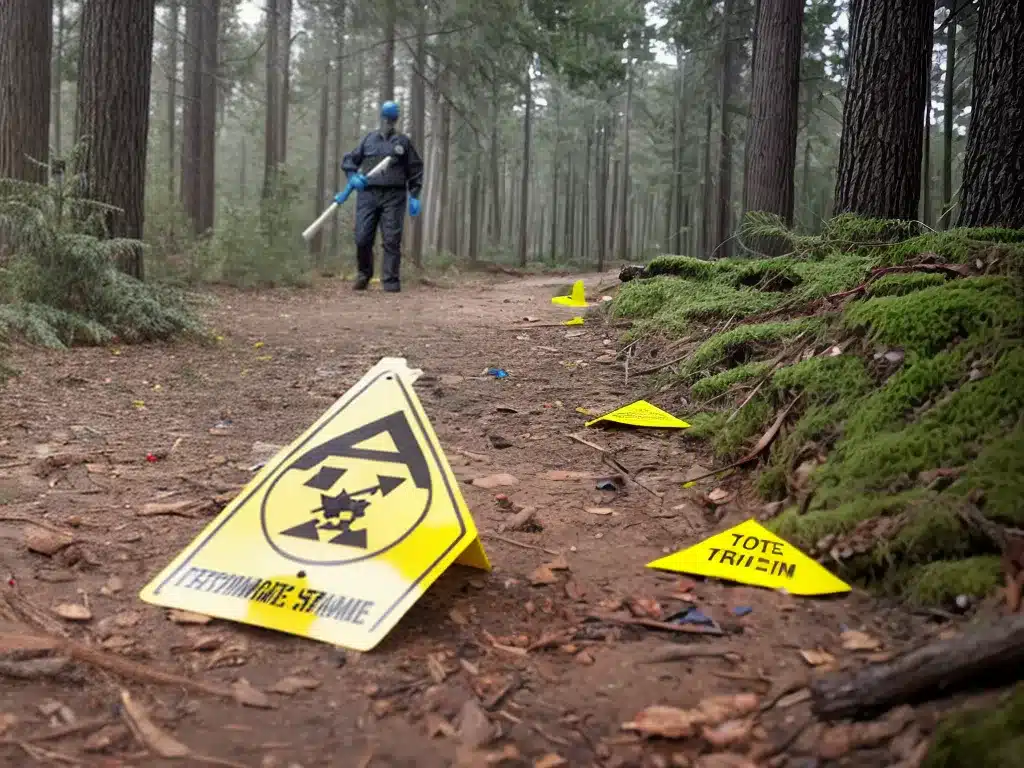Introduction
As a crime scene cleaner, I am responsible for restoring order after tragedy strikes. Meticulous protocols must be followed to remove biohazards while preserving evidence for investigators. It is grueling work, but I provide an essential service to families in need. In this article, I will share the meticulous procedures I follow to leave no trace behind.
Personal Protective Equipment
The first step is donning proper personal protective equipment (PPE). This protects me from exposure to bloodborne pathogens and hazardous materials. My PPE includes:
- Nitrile gloves – changed frequently to avoid cross-contamination
- Full body suit – fluid-resistant and disposable
- Shoe covers – prevent tracking contaminants
- Safety goggles – protect eyes from splashes
- N95 respirator mask – filters airborne particles
I also wear multiple layers of gloves that are changed regularly. Proper PPE is essential for staying safe on the job.
Initial Site Survey
Upon arriving at a scene, I perform an initial site survey. I look for obvious signs of biohazards and take notes on areas that require priority treatment. Things I look for include:
- Blood spatter patterns – indicate areas of heavy contamination
- Bone fragments – require delicate handling
- Drug paraphernalia – exposes me to communicable diseases
I determine if the scene is a biohazard level 3 or 4 based on potential risks. This informs the cleanup protocols I will follow. My aim is to identify hot zones for targeted remediation.
Isolation and Ventilation
Before cleaning, I isolate and ventilate the area. This contains contaminants and odors to the affected rooms. I:
- Seal off vents and doorways with plastic sheeting
- Establish negative air pressure with HEPA air scrubbers
- Open windows when possible to allow cross breeze
Proper isolation prevents contamination from spreading throughout the home. Ventilation helps dissipate dangerous fumes.
Blood Removal and Cleaning
For blood removal, I use enzymatic cleaners and hydrogen peroxide. I:
- Lightly mist blood spatter with the enzymatic spray
- Allow it to soak for 10-15 minutes
- Gently dab with paper towels to absorb
- Rinse with hydrogen peroxide
- Repeat as needed on stubborn areas
This breaks down blood proteins without leaving caustic chemical residues. I follow with disinfectants to sanitize the area.
Trauma Recovery
Some scenes involve traumatic injuries or suicides. In these cases, I use recovery protocols to preserve dignity:
- Covering remains with a sheet before coroner arrival
- Using opaque body bags during removal
- Handling remains gently and with respect
I understand this is someone’s loved one. My goal is to return the space to a livable condition for those left behind.
Hazardous Waste Disposal
I conclude every crime scene job by properly disposing of hazardous waste. This includes:
- Biohazard bags for contaminated PPE, wipes, and remediation tools
- Medical waste containers for sharps and biological matter
- Toxic chemical bottles sealed and labeled
I document all waste streams and work with specialized companies to ensure proper disposal. This eliminates contamination risks after I leave the site.
Restoration and Decontamination
My final step is restoration and decontamination. I:
- Clean all surfaces with hydrogen peroxide or disinfectant cleaner
- Seal cleaned carpets and porous furniture with an antimicrobial fog
- Wash walls, flooring, and upholstery with hot water and detergent
- Ventilate the area thoroughly after cleaning is complete
This removes lingering odors and biological residue. Once finished, I can confidently state the area is decontaminated and safe for daily living.
Conclusion
Crime scene cleanup requires meticulous protocols and procedures to restore order from chaos. From isolation and PPE to waste disposal and decontamination, every step is vital. My intensive training and experience allows me to leave no trace behind for families to move forward. Though difficult, it is rewarding work that provides critical closure.







